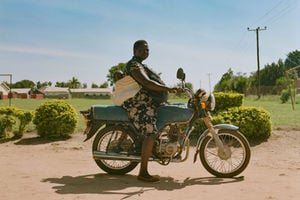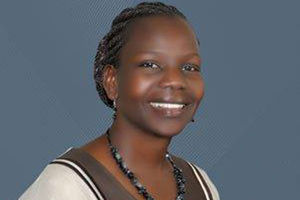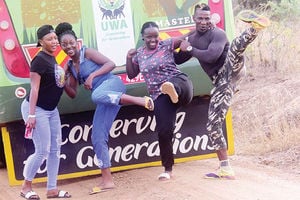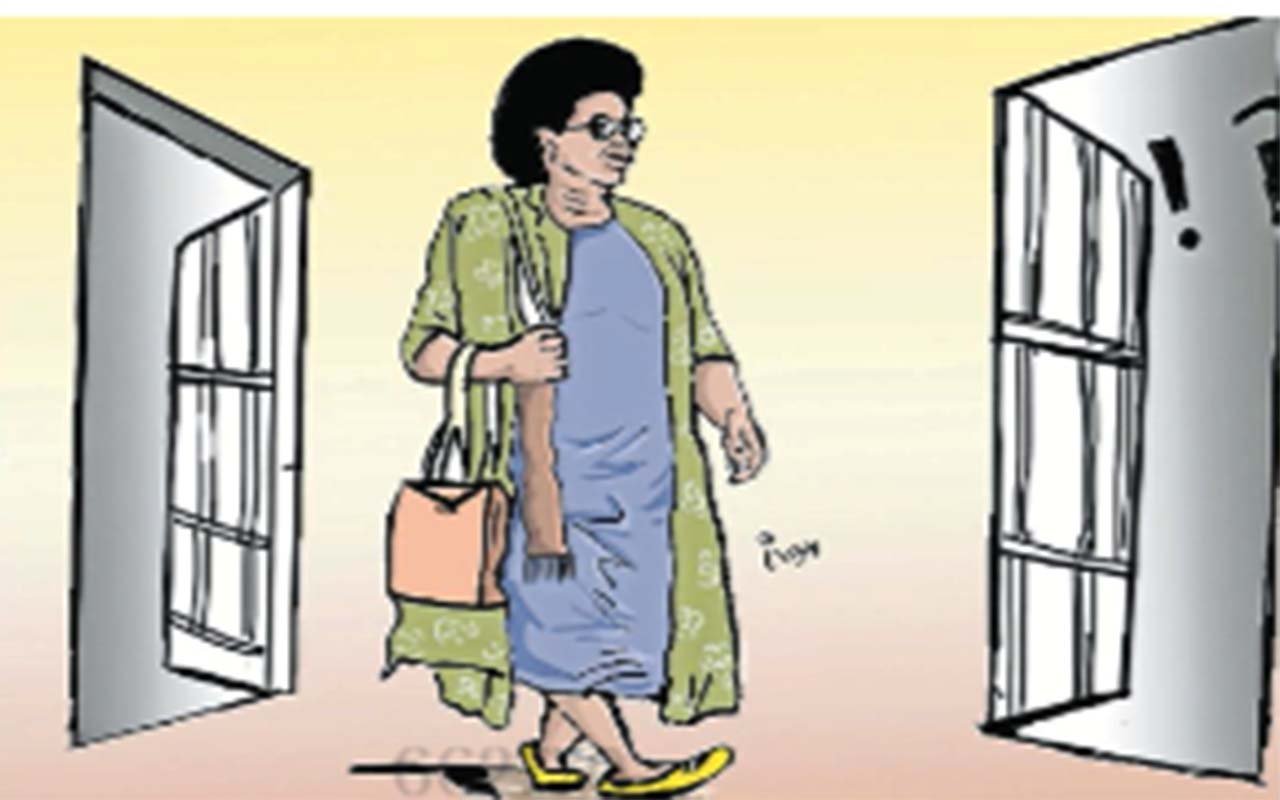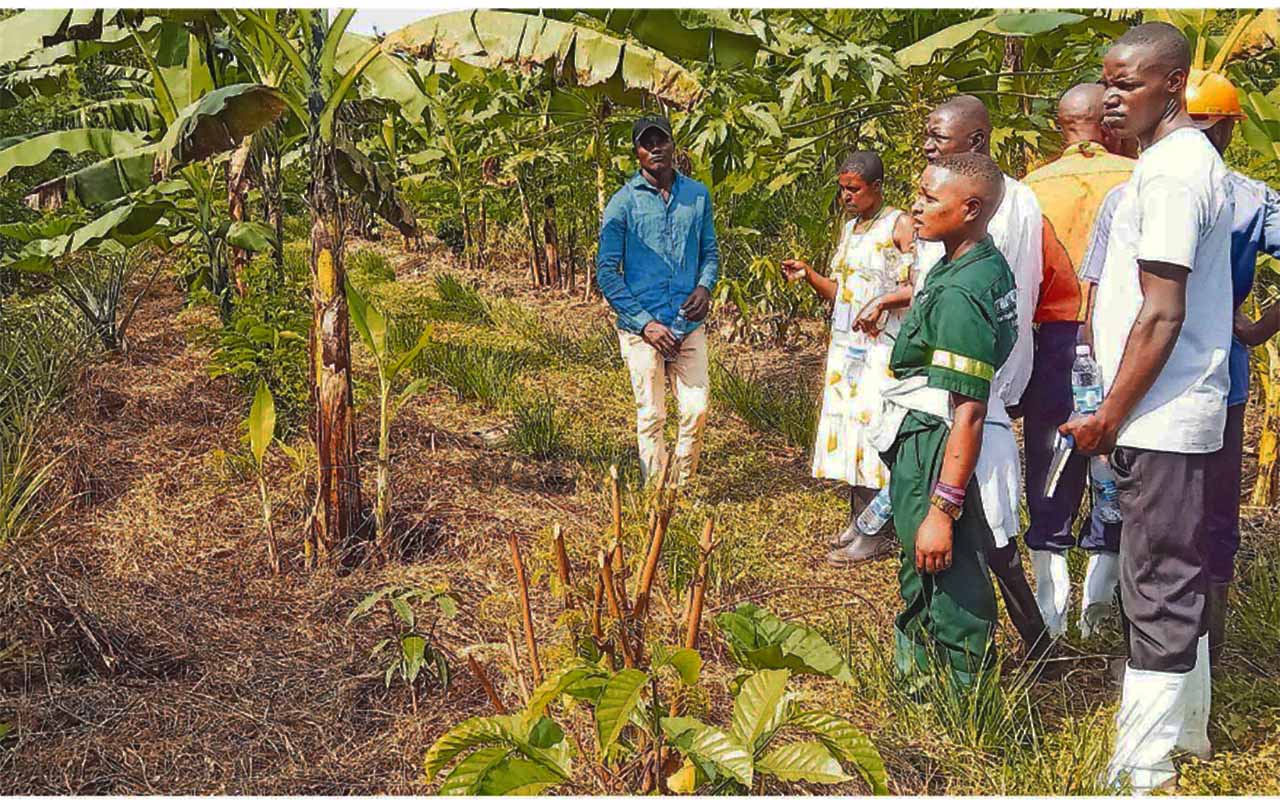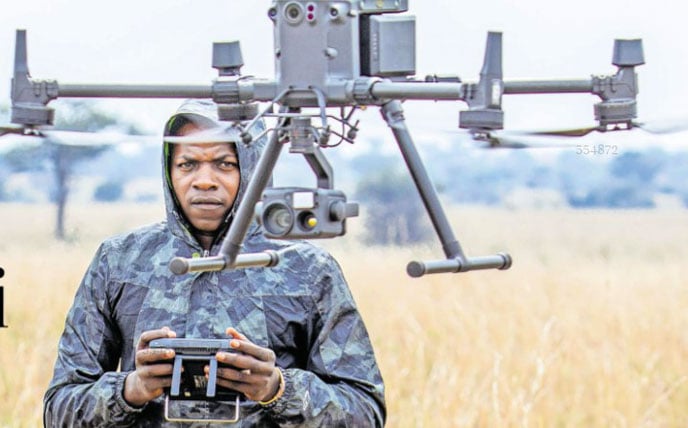
Ssenyonyi flies a drone. Photos | Promise Twinamukye
Before transitioning to tourism photography, Derrick Ssenyonyi was a street photographer. Not in the sense that you would think, but going door-to-door to take people’s pictures and getting paid for printed copies. No.
Moving with small Epson printers, he together with his team were able to take the pictures and print them out in the shortest time possible. They would get paid and move to the next house.
“That is how I got introduced to photography and the basics of it. We travelled through different villages of Mubende and Kyenjojo districts,” the now famous travel photographer says.
The job came with having to be on public speakers advertising services they rendered.
Love for tourism photography
Born in Nakasongola, Ssenyonyi – who coined the phrase Njagala Vibe – often saw tourists with huge cameras on their way to and from Murchison Falls National Park. He was also fascinated by rhinos that were never far from his home.
“My inspiration began there – to one day be on such vehicles with my camera. I also needed to know how I could make money out of that,” Ssenyoni recalls.
After Senior Six, he was offered a scholarship in Education, but opted for Uganda Hotel and Tourism Training Institute (UHTTI) Jinja where he pursued a diploma in Tourism Management and did internship at Uganda Tourism Board (UTB).
“My first photos at UTB were a mess. They did not use most of them. Understanding what I wanted to offer and what I wanted to be known for, I was pushed to learn to do better,” he recalls.
He took indoor and outdoor photos, meetings, or whatever event was on, and watched YouTube to master some photography tricks.
When Covid-19 broke out, it did not leave him the same. UTB like many other entities laid off workers, including trainees. With the knowledge acquired from this field, he started organising trips to different destinations, attracting his audience through photo shoots during the trips.
With a following, he had got from his aggressiveness on social media, he marketed the trips as photography trips.
“When domestic tourism was at its peak, many people were now involved in this kind of tourism and most did it cheaper. I could not compete anymore. However much it was a good experience, it could not sustain us. We would market one trip for about two months and have nothing going for us in those same months,” he says.
He started doing photoshoots, weddings and aggressively started marketing them and himself as a photographer.
Turning point
“The last wedding I shot was pivotal for me. I was in Ibanda and as we were shooting, the parent of the bride came to give a speech and it went: ‘Thank you so much for bringing us a pilot and not embarrassing us by bringing someone, a photographer like this one (pointing at me),’ he recalls.
In his head, he was done with weddings. And he never looked back.
He started doing full-time travel photography, first by working with hotels and lodges.
“I needed to position myself as someone with value and get value out of what I shoot,” he shares.
Using his social media following to promote his work, he got offers as a content creator with tourists, when he was not doing promotional content for hotels.
Challenges
In an environment where one works to represent the people involved and the country, being careful is an understatement. How one shows up, relates and behaves with tourists is paramount. Ssenyonyi says there have been good trips and nasty ones.
Racism and superiority
There are times he would travel with groups of people who referred to them as ‘these Africans’. That was when ego and pride would fight with humility and staying put for the sake of his country.
“It might be changing now but most hotels preferred foreign white to Ugandan tourists. We would be on a trip together but sleep in different hotels. We would not even be allowed in the hotels where the white folk slept. You would drop them off at the hotel and find another hotel to sleep in,” he recalls.
He believes they are starting to change as they slowly allow guides to stay in the hotels as well.
Underpayment
Photographers in Uganda are majorly under-appreciated and underpaid as per the industry standards.

“There are trips where I would go to do a photo shoot and they only pay for my accommodation and transport. This is something I have been trying to change, but I would do it as part of growth,” he says.
Sexual harassment
According to Ssenyonyi, some tourists have problems and want to forget them on trips. Women (and a few men) make advances towards male guides, and photographers but these stories never get told.
“You have to be protective of yourself and your brand. If anything like that happens, it is your name that is spoilt, so you have to be careful. You might enjoy the 10 to 20 minutes but lose about 10 to 20 years,” he says.
Highlights
Ssenyonyi believes he has learnt how to operate in stressful environments, and understands how different people live (due to the many places he has visited) and it has changed his perception of life.
“For example, life in Karamoja is different from life in Tooro. Your brain starts to think differently. That is why I want to visit every country before I die,” he says.
He believes he can easily go to and from places without hassle because of the connections he has made over the years.
His maiden photo exhibition is something he has toyed with for almost three years. He was ready, he had the audience but was scared to seek help. Time has, however, come where he says he needs to do bigger things than just taking photos and it is coming to fruition on September 20. Ssenyonyi will curate his first-ever exhibition dubbed Timeless Frames.
“I need to advance into storytelling, influencing, work with the government, and different brands. But I do not want to leave my career hanging. Doing an exhibition is my ultimate closure, giving a name to what I have built for years,” he says.
He believes photographers need someone to open up doors for them. Every photographer’s dream, he says, is to one day call people to see their work.
“I am going to showcase our land of beauty through my lens in the exhibition. From culture to people to nature from different corners of the country,” he says.
The exhibition will merge art, culture and tourism. He also believes the annual event will also give every photographer a platform to showcase their work. There will also be support for those who feel ready to do solo exhibitions as well.
Photography business
A professional photographer, Ssenyonyi says, is not necessarily one who takes good pictures, but one who has understood the photography business. One needs to understand how to make money out of the photos they take, how to get gigs from reputable organisations, and so forth.
“Spend a lot of time researching the business rather than just buying the trending equipment. The goal is to make money and fight poverty,” he says adding that the best equipment is what you have. Learn it and make it do your work, then think of upgrading.
He urges the government to open doors and support initiatives that support and brand the country. Spending hours in meetings and symposia, he says, is great, but there are people doing visible work on ground who need support.
Ssenyonyi urges Ugandans to love their country and visit her destinations more, and not leave it to foreigners. He believes it is cheaper than taking trips abroad.
What others say
Sandra Natukunda, Former senior public relations officer of UTB
From anyone’s first interaction with Derrick, you realise he has what they call ‘fire in the belly’. With all the growth I have seen him go through, the different pictures he has taken, and the self-promotion all come as no surprise. I could tell he was headed for greatness.
Lucy Bunyenyezi, Visual storyteller
As a creative, I know it takes a lot to get the perfect shot. When I see Derrick’s work over the years, I wonder what time he got up and how long he waited to take a certain picture. I am sure it has inspired a lot of upcoming photographers who are curious to learn.
Robert Joseph Walker, British sports commentator
My favourite picture of his was when I landed at Kapchorwa field outside a primary school. He got a shot of the schoolchildren rushing forward to say hello to me. A lot, if not all of them did not know who I was but the joy and the energy he captured in that photo crystalises for me why there is such energy about Uganda.
